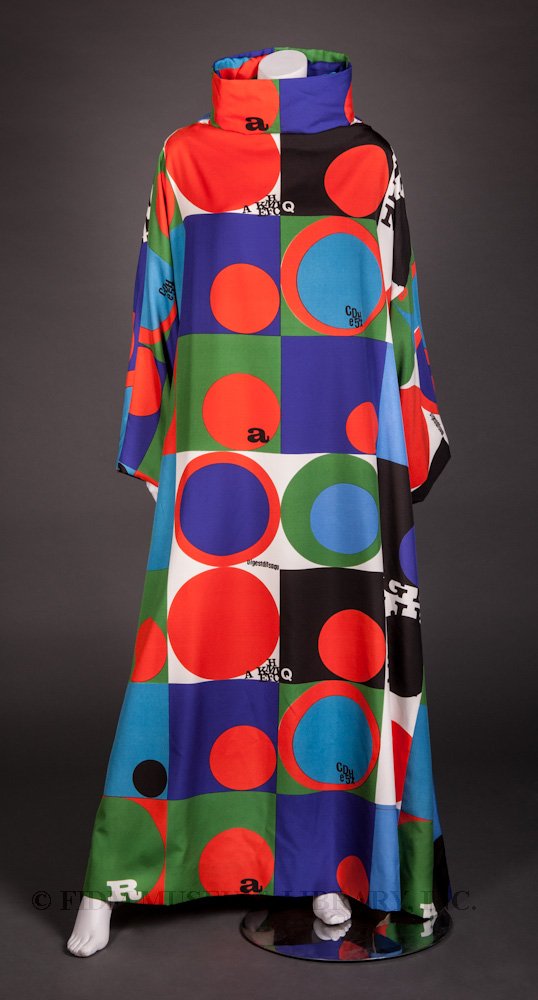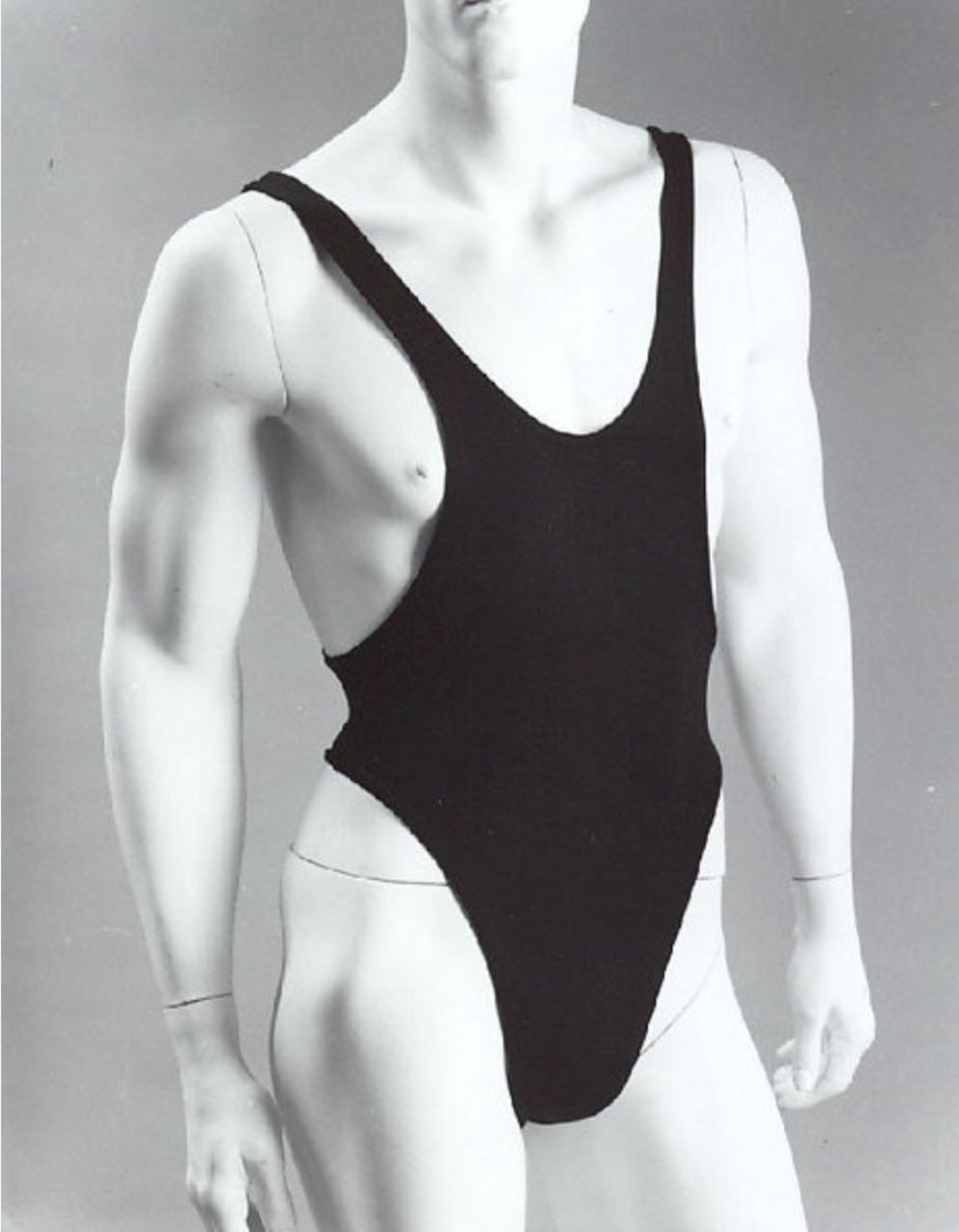About the Designer
Rudi Gernreich was an avant-garde designer whose works questioned the status quo of the fashion industry and often reflected his own political beliefs (Low 1/ Fig. 1). Born in 1922 in Vienna, Gernreich grew up within a non-religious Jewish middle-class family. Following his father’s death, Gernreich was raised mainly by his mother and aunt who ran a fashion salon in which she made copies of popular French designs (Felderer). Due to anti-Semitic violence and the rapidly approaching Nazi occupation of Austria, Gernreich and his mother were forced to flee the country in 1938 to the United States (Felderer). The two settled in Los Angeles where Gernreich eventually studied art at Los Angeles City College and joined the renowned Lester Horton West Coast dance company (Polan, Tredre). As a member of the troupe, Gernreich was a part of various performances whilst designing the company’s costumes. As such, Gernreich’s time at the company helped him to develop an understanding of movement through clothing, a theme that continued until the closure of his brand (Low 6). Additionally, it was at Lester Horton that Gernreich met his partner, political activist Harry Hay, with whom he founded the Mattachine Society, one of the United States’ first gay rights organizations (Felderer).
Fig. 2 - William Claxton (American, 1927-2008). Peggy Moffit in the monokini, 1954. Photograph. Source: Forbes
Following his time at Lester Horton, Gernreich temporarily relocated to New York and attempted to break into the fashion scene before eventually returning to California (Felderer). There, he began designing sportswear for Morris Nagel and started his long-time collaborations with Walter Bass, Harmon Knitwear, and Westwood Knitting Mills (Low, 18-22). The 1950s featured numerous milestones for the designer including his creation of the first bra-free swimsuit in wool jersey in March of 1952 as well as his first magazine credit in Glamour the following year for his knitted tube dress (Polan). Of his rise within American fashion, it’s noted that,
“Gernreich’s flair for fresh, youthful, unconstricted sportswear struck a chord with buyers and fashion editors at a time when the influence of Paris was steadily diminishing.” (Polan).
During the later years of the decade, Gernreich continued to design unstructured knit swimsuits until the end of his contract with Walter Bass in 1960 which allowed for him to finally launch his own brand: G.R. Designs (Polan).
Fig. 3 - Photographer unknown. Rudi Gernreich fashions at the Wiltern, 1985. Photograph. Los Angeles: Los Angeles Public Library. Source: Phoenix Art Museum
Fig. 1 - William Claxton (American, 1927-2008). Rudi Gernreich, 1964. Photograph. Source: Vanity Fair
Gernreich is perhaps most associated with his revolutionary 1964 ‘monokini’, a topless bathing suit (Low 43). The first image of the breast-baring design appeared in Women’s Wear Daily on June 3rd, 1964, and was modeled by Gernreich’s lifelong friend and muse: Peggy Moffit (Low 46/ Fig. 2). The design dared to question the taboo of nudity, or more specifically female nudity, and caused a worldwide outrage to the point where it was banned by the Pope, denounced by a Soviet newspaper, and prohibited on the French Riviera (Low 46). The time between Gernreich’s introduction of the monokini in 1964 and the closure of his brand in 1968 proved to be the designer’s most prolific years (Low 54).
The designer’s political beliefs were ever present within his clothing from his 1964 monokini to his 1970 ‘Unisex Collection’ which premiered in LIFE magazine (Felderer). His clothing, while remaining fashionable and fun, always emphasized movement and utility (Felderer). As a designer, Gernreich advocated for a ‘Total Look’ in which people could be dressed head to toe in his designs and where “the body became an abstract, aesthetic element, and clothing became a conscious field of aesthetic experimentation” (Felderer). Abstraction of the body was made possible through Gernreich’s technique of mixing contrasting colors, animal prints, patterns, optical effects, and text within his various garments made up of otherwise uncomplicated silhouettes (Felderer/ Fig. 3).
Fig. 4 - Rudi Gernreich (American (born Austria), 1922-1985). Pubikini, 1985. Synthetic. New York: The Metropolitan Museum of Art, 1985.374.9a–c. Gift of Rudi Gernreich Revocable Trust, 1985. Source: The Met
Gernreich appeared to care more about the statement his clothing made rather than perhaps the marketability of designs such as his monokini or his final pubikini, a sheer black bikini brief that showcased a model’s neon green-dyed pubic hair (Archer 39); the version donated to the Met included a green magic marker to replicate the effect (Fig. 4). Like the monokini, Gernreich’s final design and photoshoot before he passed away from lung cancer in 1985 revealed how the designer wished to question the way the fashion industry continually regulated women’s bodies and dedicated itself to defending the gender binary. Gernreich’s contributions to the fashion industry are immeasurable–from his introduction of the thong bathing suit to his tireless dedication to gender-neutral clothing and his desire to place comfort, movement, and utility above all else (Low 63).
Timeline Essays (Click the images to read more):
Rudi Gernreich (American (born Austria), 1922-1985). Caftan, 1970. Patterned silk. Los Angeles: FIDM Museum, G85.331.17. Bequest of the Rudi Gernreich Estate. Source: FIDM Museum
GALLERY
Rudi Gernreich (American (born Austria), 1922-1985). Jumpsuit, 1970. Wool, plastic. New York: The Metropolitan Museum of Art, 1985.374.24a, b. Gift of Rudi Gernreich Revocable Trust, 1985. Source: The Met
Rudi Gernreich (for Harmon Knitwear) (American (born Austria), 1922-1985). Patchwork swimsuit, ca. 1963. Wool, spandex, elastic, vinyl. Southbank VIC: National Gallery of Victoria, 2001.172.a-b. Purchased through the NGV Foundation with the assistance of Ms Kerry Gardner, Member, 2001. Source: NGV
Rudi Gernreich (American (born Austria), 1922-1985). Ensemble, 1967. Synthetic. New York: The Metropolitan Museum of Art, 1986.517.19a–c. Gift of Betty Furness, 1986. Source: The Met
Rudi Gernreich (for Exquisite Form) (American (born Austria), 1922-1985). Pajamas, 1966. Polyester tricot. New York: Museum at FIT, 82.153.72. Gift of Mitch Rein. Source: MFIT
Rudi Gernreich (American (born Austria), 1922-1985). The Thong, 1974. Nylon. New York: The Metropolitan Museum of Art, 1985.374.8. Gift of Rudi Gernreich Revocable Trust, 1985. Source: The Met
Rudi Gernreich (American (born Austria), 1922-1985). Dress, 1970. Printed twill silk. New York: The Museum at FIT, P87.49.3. Museum purchase. Source: MFIT
To Learn more:
- Felderer, Brigitte. “Gernreich, Rudi.” In The Berg Companion to Fashion, edited by Valerie Steele. Oxford: Bloomsbury Academic, 2010. Accessed July 15, 2022. http://dx.doi.org/10.5040/9781474264716.0007951.
- Joseph, Alexander Low. 2013. Fashion, Politics, and the Career of Gernreich. Ph.D. diss., Fashion Institute of Technology, State University of New York. Accessed July 15, 2022. https://www.proquest.com/dissertations-theses/fashion-politics-career-rudi-gernreich/docview/1685033151/se-2.
- Polan, Brenda , and Roger Tredre. “Rudi Gernreich (1922–1985).” In The Great Fashion Designers: From Chanel to McQueen, The Names that Made Fashion History, 148–154. London: Bloomsbury Visual Arts, 2020. Accessed July 15, 2022. http://dx.doi.org/10.5040/9781350091627.0034.





















